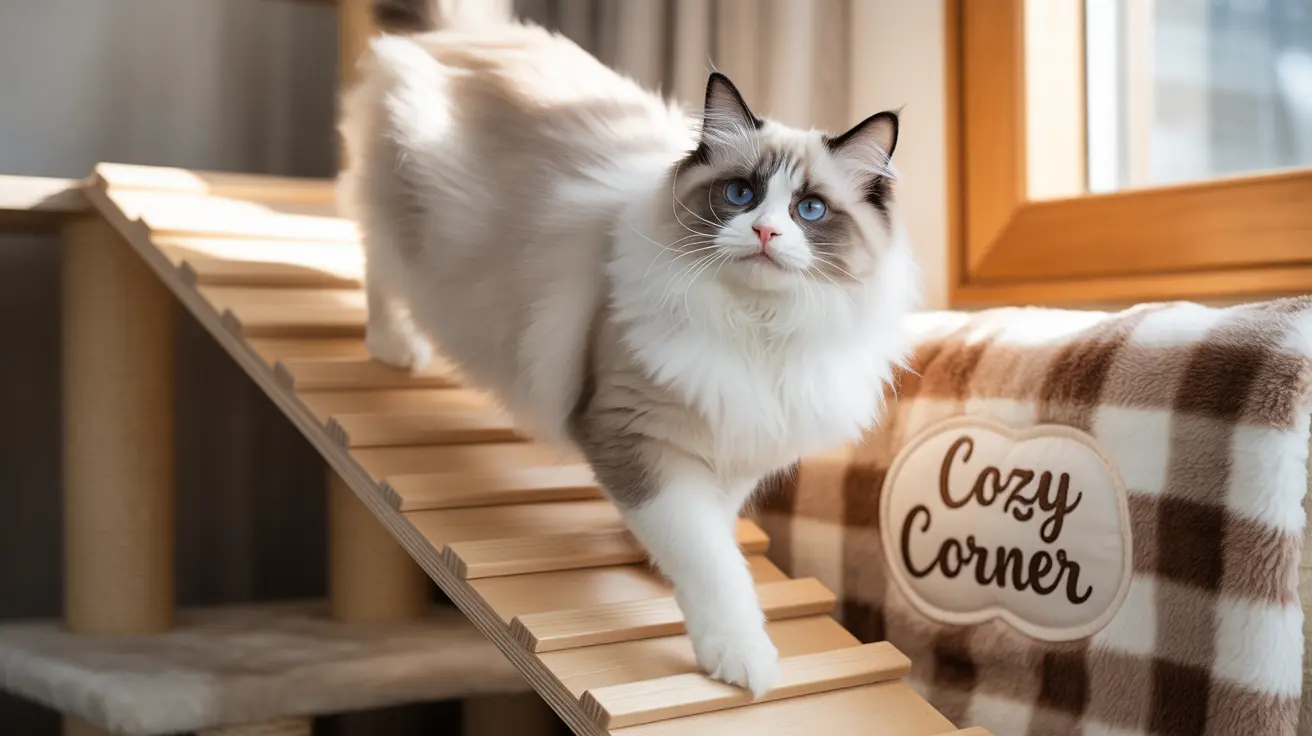Introduction
Creating a DIY cat ramp can significantly improve your feline companion's quality of life, especially if they're senior, arthritic, or recovering from injury. A well-designed ramp provides safe access to elevated spaces while reducing the strain on your cat's joints and muscles. In this comprehensive guide, we'll walk you through everything you need to know about building the perfect cat ramp, from essential materials to crucial safety considerations.
Essential Materials for Your DIY Cat Ramp
Before starting your project, gather these fundamental materials:
- Sturdy plywood or MDF board
- Non-slip carpet or rubber matting
- Wood for side rails
- Pet-safe wood preservative
- Screws and mounting hardware
- Wood glue
- Measuring tape and pencil
- Safety equipment (gloves, goggles)
Design Considerations for Maximum Safety
The success of your DIY cat ramp depends heavily on proper design planning. The most critical factors include:
Optimal Incline Angle
For senior or mobility-impaired cats, maintain an 18-degree slope angle. This gentle incline ensures comfortable climbing without straining joints. For more active cats, you can increase the angle up to 26 degrees, but never steeper.
Width and Stability
Build your ramp at least 10 inches wide to give your cat plenty of room to maneuver. Install side rails at least 1.5 inches high to prevent accidental slips and provide guidance. For visually impaired cats, consider higher rails of 4-8 inches.
Construction Steps
1. Planning and Measurement
Measure the height from the floor to your target surface (bed, sofa, etc.). Use this measurement to calculate the required ramp length based on your chosen angle. Remember: gentler slopes need longer ramps.
2. Building the Base
Cut your plywood to size, ensuring clean, smooth edges. Sand any rough spots to prevent splinters. Apply pet-safe wood preservative to protect against wear and moisture.
3. Adding Traction
Cover the ramp surface with non-loop carpet or rubber matting. Secure it firmly using pet-safe adhesive or flat-headed nails. Ensure no hardware protrudes that could catch paws or claws.
4. Installing Safety Features
Attach side rails securely along both edges. Add a level platform at the top for easy transitioning. Test all components for stability before allowing use.
Training Your Cat to Use the Ramp
Many cats need time and encouragement to feel comfortable using a new ramp. Start with these training steps:
- Place treats along the ramp to create positive associations
- Guide your cat gently with their favorite toy
- Offer praise and rewards for successful attempts
- Practice in short sessions to build confidence
- Never force your cat to use the ramp
Frequently Asked Questions
How do I build a safe and effective DIY cat ramp for my senior or mobility-impaired cat?
Focus on creating a gentle slope (18 degrees), using non-slip materials, and including secure side rails. Ensure the ramp is firmly anchored and wide enough (at least 10 inches) for comfortable movement.
What materials and design features are best for ensuring my cat ramp has good traction and stability?
Use non-loop carpet or rubber matting for traction, and secure it firmly to plywood or MDF board. Add side rails and ensure the ramp is properly anchored to prevent wobbling.
What is the ideal ramp incline to make climbing easy and safe for elderly or arthritic cats?
The optimal incline for senior or arthritic cats is 18 degrees. This gentle slope allows for comfortable climbing without straining joints or muscles.
How can I introduce and train my cat to use a new ramp without causing stress or fear?
Use positive reinforcement with treats and toys, starting at the bottom of the ramp. Allow your cat to explore at their own pace and never force them to use it.
When should I choose a ramp over stairs for my cat's mobility needs, and what safety tips should I follow?
Choose a ramp for elderly, arthritic, or injured cats, as it requires less effort than stairs. Ensure proper traction, secure anchoring, and appropriate side rails for safety.
Conclusion
Building a DIY cat ramp is a rewarding project that can significantly improve your cat's quality of life. By following these guidelines and safety considerations, you'll create a sturdy, comfortable mobility aid that your feline friend can use for years to come. Remember to regularly inspect and maintain the ramp to ensure continued safety and functionality.






